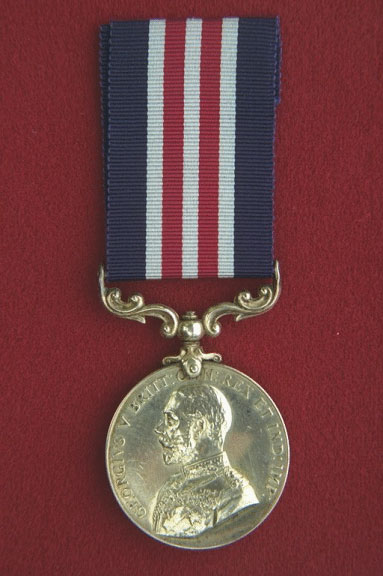Decorated three times

A Military Medal like the one Frank Jérome earned three times during the First World War. Photo: Veterans Affairs Canada
Frank Narcisse Jérome, a Mi’kmaq member of the Gesgapegiag First Nation, was born on Québec’s Gaspé Peninsula near the town of Maria in 1886. He was 29 years old when he volunteered to serve with the Canadian Expeditionary Force in June 1916 during the First World War. The young recruit initially joined the ranks of the 189th (French Canadian) Battalion, a francophone unit based in Rivière du Loup, Quebec. The 5’8” (173 centimetre) Jérome had worked as a labourer and lumberjack in civilian life, suffering an axe injury to his right hand that would prove to not prevent him from becoming an exceptional soldier.
Jérome’s troop ship the SS Lapland set sail from Halifax in late September 1916. Once in England he would be transferred to the 14th Battalion (Royal Montréal Regiment) and was sent to the Western Front in late November 1916. Jerome would see heavy action in France and Belgium, taking part in major battles at places like Vimy Ridge, Hill 70, Passchendaele and in the series of actions during “Canada's Hundred Days” in the closing months of the First World War that began with the Battle of Amiens in August 1918.
Jérome served bravely and well during the war. He rose through the enlisted ranks, being promoted to lance corporal in May 1918 and to corporal in November 1918 before ending his military service as a sergeant. Indeed, he would be one of our country’s most highly decorated soldiers – one of only 39 Canadians who received the Military Medal three times (the medal plus two bars) during the conflict. Records from this era can be incomplete and only the details for the first of his medals survives. In the closing days of November 1917, the 14th Battalion was helping hold the front lines near Avion, France. Private Jérome was a member of a Lewis machine gun crew when the Germans launched repeated trench raids. Despite being rocked by exploding artillery shells, Jérome continued at his post to help repel these attacks, then later organized a patrol to go into no man's land to gather information. His great courage was summed up in a passage from his Military Medal citation that reads, “His coolness under fire was a brilliant incentive to all ranks.”
Jérome’s courage would not end there. During the final months of the war, the Canadian Corps was in the forefront of a series of Allied attacks in the late summer and fall of 1918. He would earn the Military Medal again (the first bar) for his bravery in the fighting in August or early September of 1918. During the crossing of the Canal du Nord by the Canadian Corps on September 27, 1918, Jérome was wounded. He would remain on the front lines, however, and earn the second bar to his Military Medal for his brave actions during this battle.
Jérome survived his wartime combat but the danger he faced was not over as he became seriously ill with influenza in February 1919, and would need months to recover. Sergeant Jérome was discharged from the army in Montréal, Quebec, on September 17, 1919 and finally returned to civilian life after more than three years in uniform. Sadly, Jérome died of pneumonia in 1934 at the age of 47. His headstone can be found in the cemetery at Gesgapegiag, Quebec, and his name also appears on the local war memorial there.
- Date modified: